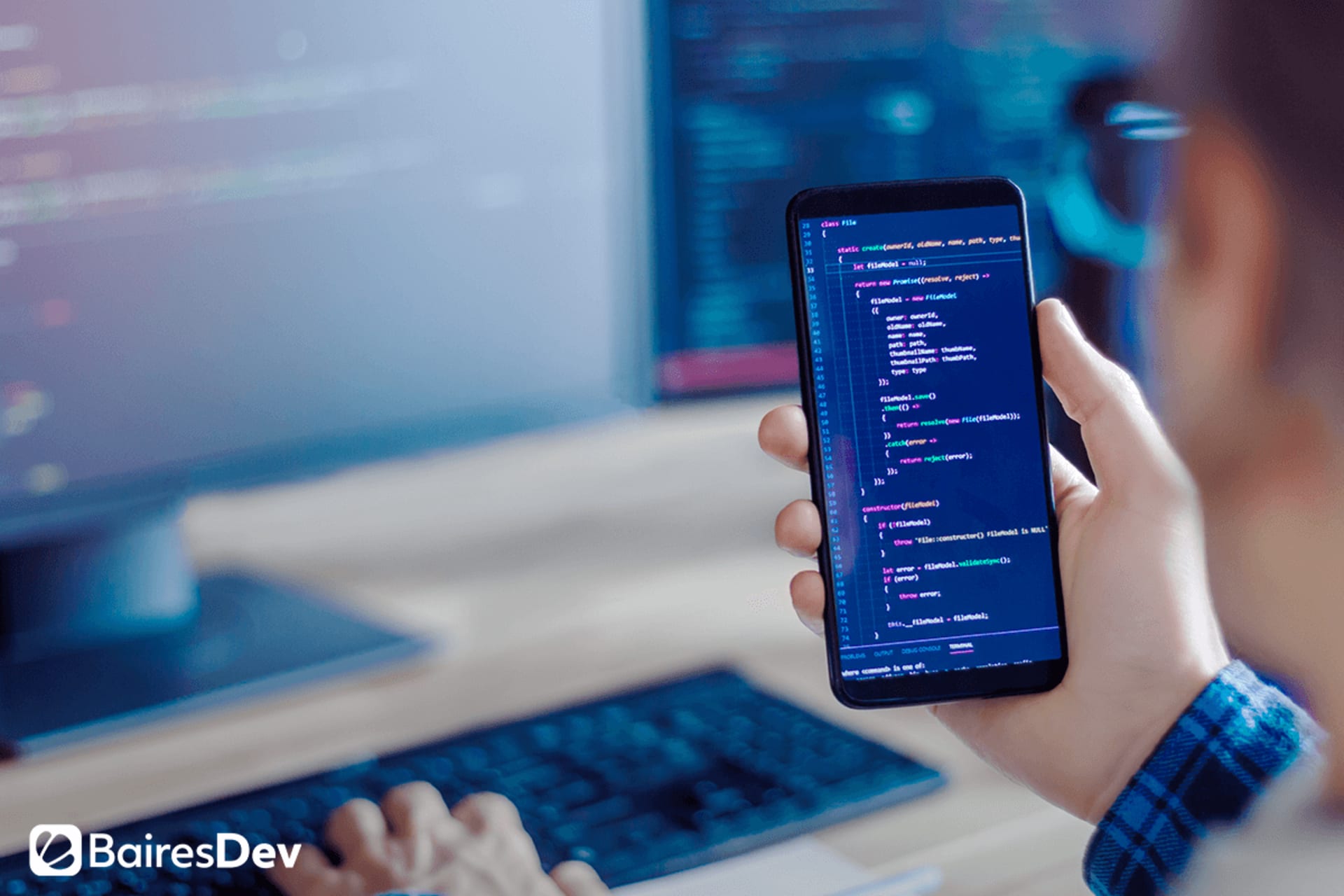Companies can use mobile apps for multiple purposes, to serve both customers and employees. For example, a shopping app can allow retail customers to easily find what they need and purchase it no matter where they are. A loyalty app can track purchases, visits, referrals, or other desirable actions and deliver rewards.
For employees, a news app could deliver beneficial updates, links to additional content, and other resources. A data analysis app could enable workers to access information that improves efficiency, reduces costs, or accomplishes other business goals.
Yet, a company that wants to develop an app for these or other purposes may not have the resources available to do so. While IT professionals serve a valuable purpose, not all of them are trained as developers, nor would they want to take on this task in addition to their existing workload. A nearshore outsourcing (nearshoring) agency like BairesDev can take on the mobile app development process seamlessly and affordably. The following FAQ addresses common questions regarding this approach.
Q: What Is Nearshoring?
A: Nearshoring is hiring a vendor outside of your country, but close by. Typically, the nearshoring agency shares your language, culture, and time zone. For example, companies in the U.S. commonly hire agencies in South America. Nearshoring is one form of offshoring, which also includes hiring a vendor in a more distant location. All of these approaches fall under the category of outsourcing, as the following video explains.
Q: What Benefits Does Nearshoring Offer?
A: There are numerous benefits to nearshoring. It offers advantages over both using in-house staff to develop mobile apps and using offshoring to do so. With nearshoring, you’re essentially offloading the entire mobile app development process, including finding professionals to work on your project, managing the project, and providing training, benefits, and office space for new employees. The nearshoring agency takes care of all these matters for you.
Unlike offshoring, in which you may be working with people in different time zones, languages, and cultures, with nearshoring all these elements are the same. Therefore, you can be more productive, knowing your team members are available when you’re working, being able to communicate effectively, and avoiding the potential for “lost-in-translation” pitfalls.
Nearshore mobile app developers perform this kind of work exclusively, so there’s no ramp-up period or training needed. In fact, as you work with them, you will likely learn many best practices from them. These professionals stay on top of the latest news, trends, and procedures, meaning they can deliver the best possible outcomes for your project.
Finally, nearshore vendors are affordable. Because you don’t have to pay for benefits the way you would with new employees – and because their employment ends when the project does – you end up paying less than you would pay professionals working directly for your company.
Q: How Much Does Nearshoring Cost?
A: The total amount you’ll spend will vary depending on your project. However, a typical range of costs is from a few thousand dollars for a simple app to hundreds of thousands for a more complex one. Remember, the cost will likely be much lower than the overall cost if you tried to complete the project in-house, considering the following factors:
- You don’t have to hire new employees.
- You don’t have to devote time or money to onboarding or training.
- The project will be done right the first time, meaning no additional costs.
- The cost of a professionally produced app will result in a high ROI.
You can reduce the overall cost associated with the mobile app development process by clearly defining your goals for the app and considering in advance which platforms you want it to operate on and what features you want it to include.
Q: What Is the Outsourcing Process?
A: Each agency will have its own way of doing things. But there are some steps they are likely to take when working on your project:
- Gather information. The developer will ask you questions about what you want the app to do, how you want it to work, and how you want it to look.
- Initial design. The developer will create mockups, that is, pictures of how the app will operate, and how it will look on various screens.
- Graphic design. The developer will create a “look and feel” for your app, consistent with your brand and requirements.
- Coding. The developer will create the code that is the basis for the app’s operation.
- Testing. The developer will run various tests to ensure the app works properly. This phase may also include user testing to ensure it is easy for people to operate.
- Upgrades. Once the app has launched, the software developer should still be available to fix any problems or add functionality based on user feedback.
The entire process can take anywhere from four months for a simple app to a year for a more complex one.
Service to Fit Your Needs
A mobile app might seem like a frivolous extra but, for some companies, it’s a necessity. For example, if you’re a retailer and all your competitors have shopping apps, the fact that you don’t could be a deal-breaker for many customers. Not only does an app help them shop, but it can also help them discover new items and access prompt service. This type of user experience is no longer just a nice extra. It’s expected by many consumers.
Similarly, an employee app, such as one that collects critical data from field workers, could make or break your business, depending on the kind of work you do. If your competitors are analyzing large amounts of data and gaining productivity because of it, they could easily leave you behind.
That’s why you need the mobile app development process to be done quickly and done well. Hiring a nearshore development agency will get you these outcomes with service that accommodates your working hours and helps you meet your business goals.






